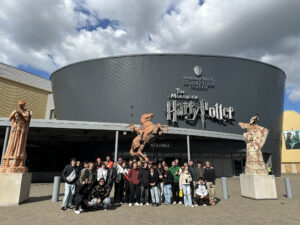In this article, you will explore the fascinating world of metaphysical art and discover how this artistic current can offer you new perspectives on reality. Through the analysis of key works and concepts, you will understand how metaphysical art challenges your perceptions and encourages you to reflect on the nature of existence. Prepare to broaden your gaze and confront ideas that go beyond the visible, transforming the way you interpret the world around you.
Metaphysical art: definition and origins
Metaphysical art is an artistic movement that developed in Italy in the first decades of the 20th century, characterised by an atmosphere of mystery and a representation of alternative realities. It is characterised by its surreal approach to everyday life, inviting the observer to look beyond appearances. With its fusion of classical and modern elements, metaphysical art challenges artistic conventions, leading one to reflect on what is real and what is illusory.
The historical roots of metaphysical art
The historical roots of metaphysical art date back to the period between the two world wars, influenced by the developments of the artistic avant-gardes. The historical context, marked by social and political tensions, inspired artists to explore new ways of representing reality. This movement was situated in an era of transition, seeking answers to existential questions and challenging previous aesthetic conventions.
Main exponents and significant works
The main exponents of metaphysical art include Giorgio de Chirico and Carlo Carrà, whose work defined the principles of this movement. Works such as de Chirico’s ‘Mystery and Imagination’ reveal strong emotion and depth, immersing you in a dreamlike reality. Their ability to evoke feelings of nostalgia and disquiet remains fundamental to the understanding of their art.
To elaborate, artists such as de Chirico and Carrà created significant works that have become icons of the movement. De Chirico’s famous ‘Melancholia’, for example, depicts empty spaces and isolated figures, inviting one to contemplate a sense of solitude and mystery. Carrà’s compositions, on the other hand, defy logic with everyday objects arranged in unusual ways, stimulating your imagination and promoting reflection on perceptions of reality. Through these artists, metaphysical art continues to influence and inspire generations of creatives and thinkers.
The perception of reality in art
In metaphysical art, the perception of reality is explored through an approach that transcends the visible world. It invites you to reflect on how your understanding of reality is influenced by experiences, emotions and interactions. The artist does not merely represent reality, but creates an evocative universe that stimола your imagination and leads you towards a deeper understanding of existential dynamics.
The representation of the invisible
The representation of the invisible in metaphysical art is fundamental to understanding what lies beyond the surface of things. This art form challenges you to see beyond the tangible and perceive the subtler dimensions of reality. Through symbols and enigmatic spaces, the artist communicates the ineffable, offering you the opportunity to explore the mystery of existence.
The subjective interpretation of reality
The subjective interpretation of reality is a pillar in metaphysical art. Each work is an invitation to explore your unique perspective on life. It reminds you that reality is never objective, but rather a reflection of your personal experiences and perceptions. Through the filter of emotion and thought, the artist translates the world into a form that resonates with your inner self.
This subjective interpretation allows you to get in touch with your individuality and to accept that there is no universal truth. Each of your reactions to a work of art is an inner journey that helps you better understand your place in the universe. In this way, art becomes a tool for introspection and self-reflection, prompting you to explore not only the meaning of the work, but also the complexities of your own identity and emotions.
Metaphysical concepts in art
Through metaphysical art, you can explore deep and complex concepts that question the nature of reality. This art form invites you to contemplate elements beyond the visible, revealing layers of meaning that speak to your experience and perception of the world. Elements such as time and space, along with ideas of identity and existence, are interwoven in the creation of works that stimulate your inner reflection.
Time and Space
In the context of metaphysical art, time and space are not just physical dimensions; they represent subjective experiences and states of mind. You can observe how artists manipulate these dimensions to create works that challenge your perception of the present and the past, inviting you to consider the fluidity of time and the immateriality of space. This approach encourages you to explore the depths of existence with a new awareness.
Identity and existence
Metaphysical art often asks fundamental questions about identity and existence, prompting you to reflect on who you really are. Through images of familiar objects portrayed in unusual contexts, you can perceive a disconnect between your self and the world around you. This dialogue between interiority and exteriority invites you to explore your sense of self, raising questions about the nature of reality and your place in it.
Focusing on identity and existence, you realise that metaphysical art is not just an aesthetic experience, but a true tool for introspection. You can perceive how the works reflect the complexity of your soul and your search for meaning in life. Through this lens, artistic creations become mirrors of your existence, inviting you to dig deeper into your consciousness and confront the challenges of your innermost thoughts and feelings.
Metaphysical art and philosophy
Metaphysical art represents a crossroads between creativity and philosophical reflection. It stimulates a deeper understanding of reality, inviting you to explore the meaning hidden behind appearances. Through the use of surreal and symbolic elements, artists seek to challenge visual conventions and push you beyond your usual way of perceiving the world. In this way, art becomes a means to question your existence and the nature of reality itself.
Influence of philosophers on metaphysical artists
Philosophers have exerted considerable influence on metaphysical artists, shaping their ideas and inspiring their creativity. Thinkers such as Plato and Kant explored the nature of being and perception, offering insights reflected in the work of artists such as Giorgio de Chirico. These connections will allow you to fully grasp the dialogue between philosophy and art, facilitating your own more elaborate understanding of the artist’s message.
Philosophical Reflections on Art
Philosophical reflections on art raise fundamental questions about its nature and function. We invite you to consider what constitutes artistic value and the role of personal interpretation in aesthetic experience. Art is not just a visual expression, but a window into existential questions, raising questions about truth, beauty and the meaning of human experience.
As you explore these philosophical reflections, you may find that art serves not only to beautify your environment, but also to stimulate you to question universal and personal issues. The beauty and complexity of metaphysical art can offer you a means to explore your conceptions of reality and meaning. Learning to see beyond what is immediate will lead you to a richer and deeper artistic experience, in which works of art become food for thought, rather than mere objects to be observed.
Contemporary Applications of Metaphysical Art
Metaphysical art also offers interesting insights into the contemporary world, inspiring artists and designers to explore new forms of expression. This current invites reflection on the duality between the visible and invisible, stimulating the creation of works that transcend mere visual representation. Discovering how these principles can influence your creative approach can enrich your artistic experiences.
Resonances in design and architecture
In design and architecture, metaphysical art results in spaces that invite contemplation and reflection. This current encourages the use of geometric shapes and evocative colours to create environments that transcend functionality. You can see how these influences make spaces more evocative and stimulate your imagination.
Metaphysical art in the modern context
In the modern context, metaphysical art reinvents itself, finding new ways of expression through technology and new media. Contemporary artists interpret and reinterpret metaphysical ideas using video, interactive installations and augmented reality. This innovative approach allows you to interact with art in new ways, prompting you to explore existential questions and perceptions of reality.
In this evolving artistic landscape, you can see how metaphysics continues to dialogue with the present, addressing universal themes such as time, space and the essence of being. Modern works offer you a new dimension of sensory experience and personal reflection, encouraging you to think critically about your position in the world. Metaphysical art, with its ability to suggest rather than show, invites you on a journey of inner discovery and a deeply engaging aesthetic experience.
Criticism and controversy surrounding metaphysical art
Despite its fascination, metaphysical art has been subject to much criticism. Some experts consider it too enigmatic and distant from everyday reality, while others argue that its abstractness can confuse viewers, making its messages difficult to access. Moreover, its place in the contemporary art scene is often debated, questioning whether its reflective approach still has relevance in the modern world.
Critical reflections and debates
Critical reflections on metaphysical art open up a fundamental debate on the essence of art itself. Some critics believe that its ability to evoke deep emotions is obscured by the pursuit of conceptual abstractions, while others see in it an opportunity to reflect on existential issues. This tension between interpretation and perception stimulates lively discussions between artists, critics and art lovers.
Metaphysical Art Today: Relevance and Non-Relevance
Today, metaphysical art is viewed from different angles. On the one hand, many appreciate its ability to stimulate an intimate connection with reality. On the other, some argue that its rather abstract style may not stand the test of time in an age dominated by digital and visual immediacy. It is therefore debated whether his themes are still able to speak to contemporary audiences or whether they are destined to remain in the past.
In the current art scene, metaphysical art continues to arouse interest and reflection, acting as a bridge between tradition and modernity. You might ask yourself whether these works, laden with symbolism, are able to touch the chords of your aesthetic sensibility. Despite the criticism, there are contemporary artists who are inspired by this style to explore new dimensions of human thought. The challenge for metaphysical art therefore remains to remain relevant while inviting each viewer to examine their own reality through a deeper, contemplative filter.
What can metaphysical art teach us about reality?
Through metaphysical art, you can explore the complexity of reality and understand how the visible world is only a part of a deeper dimension. This art form invites you to reflect on spiritual connections and the essence of things, prompting you to question what is beyond appearance. By learning to appreciate metaphysical art, you will develop a greater awareness of your existence and your place in the universe, thus enriching your experience of reality.



